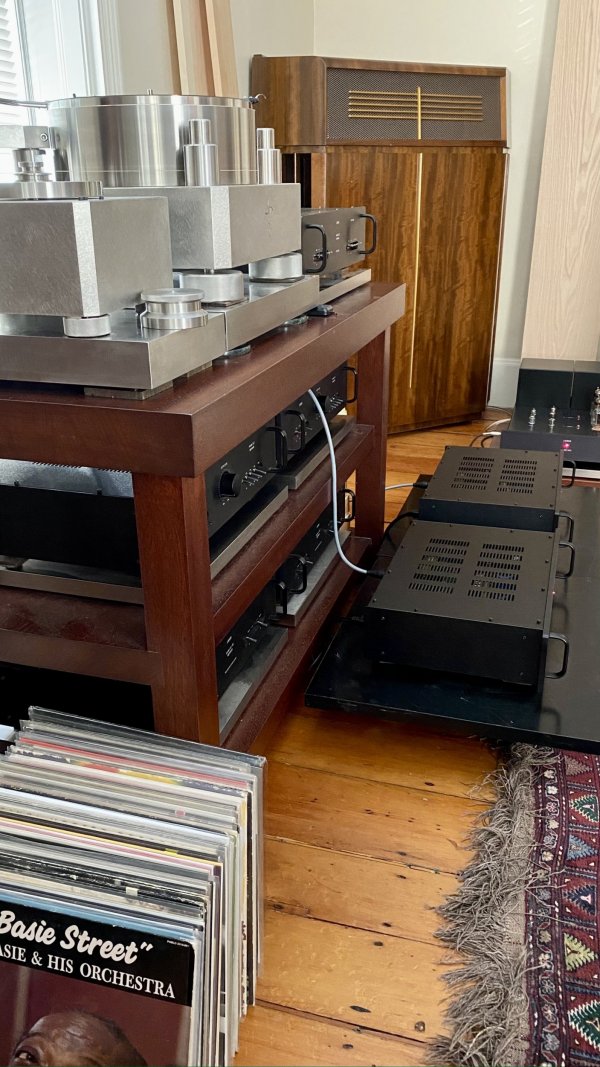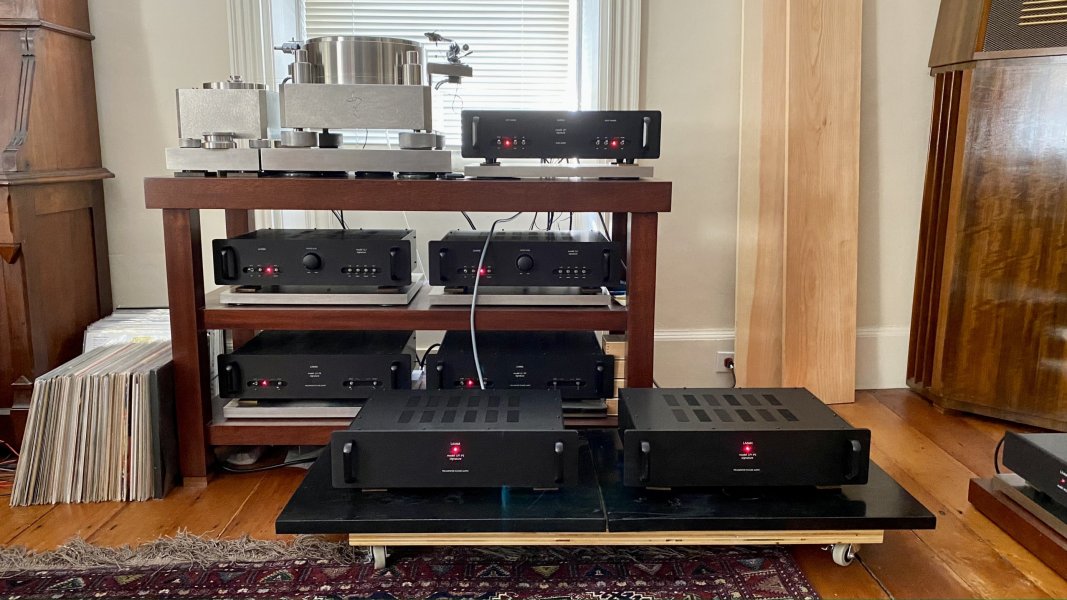I recently learned an important lesson: The presentation of music from open back corner horn speakers can improve with careful fine tuning of position and orientation.
I had known from experimenting with my former Magico speakers that the sound improved when I made very small adjustments to optimize their position and orientation and symmetry. I simply assumed that my corner horns would not benefit from such attention. I was wrong.
I live in an old house with uneven floorboards, sloping floors and non smooth, non vertical walls. These imperfections from what one might expect of new, modern construction are not huge, but they seem to matter. The floor at each corner slopes downward slightly, one corner more than the other. The walls are not quite plum. The speakers include instructions for foam strips along the top edge of the base cabinet and vertically in the back corner, symmetrical for each side. The rear corner of the bass cabinet is actually cut short by a few inches. Each side with the wall forms the flare of a rear loaded bass horn. For improved bass response and coupling to the walls and room, Vitavox recommends sealing these four edges per speaker with a dense foam.
About a week ago I removed the top cabinet enclosing each compression driver, horn unit and crossover. DDK suggested I place a spirit level on the top of the bass cabinet. It is a flat surface and supports the horn and crossover. I noticed that each speaker tilted forward, one slightly more than the other and that each speaker was slightly tilted.
The furniture designer who built my rack cut very precisely a series of 2.5" X 2.5" wood shims varying in thickness by 1/32". I had four samples of ten different thickness to play with. These were made to use to level my equipment rack on my uneven floor. I had a bunch of shims left over, so I decided to place a few in combination under each of the front corners of each speaker. The CN-191 cabinets have hard brass furniture disks hammered into the wood like a large tack at the two front corners, so the bottom of the cabinets are slightly raised off of the floor anyway. I placed the shims under these brass disks.
During this process, I noticed that I could slide each speaker slightly deeper into each corner and orient them for a more even/uniform fit compressing the foam a bit further and creating a better seal with the wall. The speakers were raised roughly 1/4" to 5/8" in the front and adjusted by 1/32" to 3/16" side to side. Now plum and level and more tightly pushed into the corners, I placed the horn cabinet back on top of the bass cabinet and listened to some music.
The sound was immediately different. There was more bass energy and focus, but something was slightly off. There was also a bit more contrast but less nuance. I was surprised that it had such an effect on the presentation. I knew from initially installing the speakers, that these sixty year old cabinets needed time to settle and to acclimate to the new environment (temperature/humidity). At that time, the electronics and drivers also needed time to loosen up after being rarely used for so many years. I decided to wait a while before listening critically to the changes with a larger variety of music.
The sound continued to change a bit and after three or four days, the system was settled and stable. Music basically sounds more natural than it did before, more present, more alive. The four strings in a quartet have more distinct timbre. Resolution has improved so I hear a more realistic presentation of both the notes' fundamentals and harmonics. There is more nuance in the playing and volume changes. The lower cello notes have more power, the body resonates more, and all the strings have more weight. The same with piano. The notes are clearer, the highs are cleaner and the lows have a new heft and weight. There is more body to the whole range. The pianist's left and right hands are easier to follow.
I played the Sheffield Drum Track. I like this for sheer power and dynamics, but much can also be learned from the different percussion tones. The kick/bass drum is more solid and explosive, the brush work is cleaner and more delicate. The cymbals have more tonal color, more brass tone, and they are less hard/white/splashy sounding. The snare drum sounds less congealed, so each lightning quick tap is more distinct and clean. The overall pace and flow is more engaging. There is more energy filling the room.
These speakers have open backs, so how they couple with the walls seems to be very important. The walls are in essence a part of the cabinet. The orientation of the mid/upper horn also seems to matter. They are now level and even which I think likely contributes to the increased focus I am hearing.
It is a fascinating hobby, and there seems to be so much to learn. I continue to respect and appreciate the importance of set up within a particular room context. And despite having a fairly stable system now, I continue to experiment and look for ways to improve the sound. Oddly enough, I thought to check the speakers' positioning/orientation after I read someone's comment to Ron in his system thread about the importance of confirming that his four speaker towers were all plum. It is strange how these things develop.










